Please note:
Due to the sensitive nature of information and NDA clauses, client identities have been anonymised in my case studies.
Case Study shortened on mobile
Enabling Power of Attorney via Mobile App
About the project
The process of granting Power of Attorney (PoA) for joint home loan accounts was entirely manual — customers had to visit a branch or call a service centre. The goal of this project was to digitise the PoA process within the mobile app, making it accessible, secure, and self-service. This would not only reduce operational costs and call volumes but also align with the bank’s broader digital transformation strategy.
The Power of Attorney process for joint home loan accounts was limited to in-branch or call center channels—an outdated, inconvenient approach for customers. The goal was to digitize this process within the mobile app.
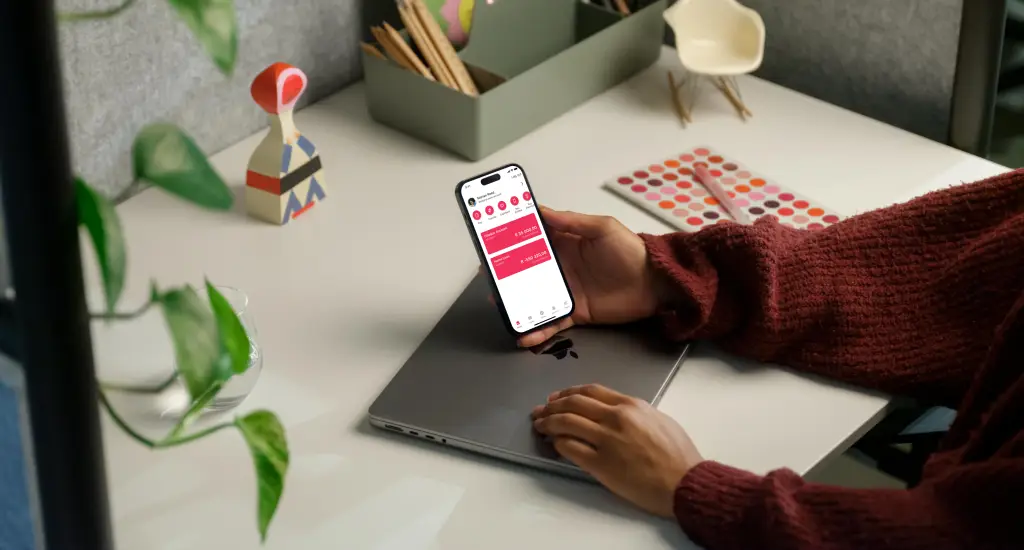
My role
As the sole Product Designer, I was responsible for leading the entire UX and UI effort. This meant running discovery, mapping out user journeys, designing multiple user flows, validating technical feasibility with architects, and producing wireframes and iterations — all while facilitating alignment among stakeholders across product, legal, and compliance.
Product Designer — UX Strategy, Research, UI Design
As is process in branch
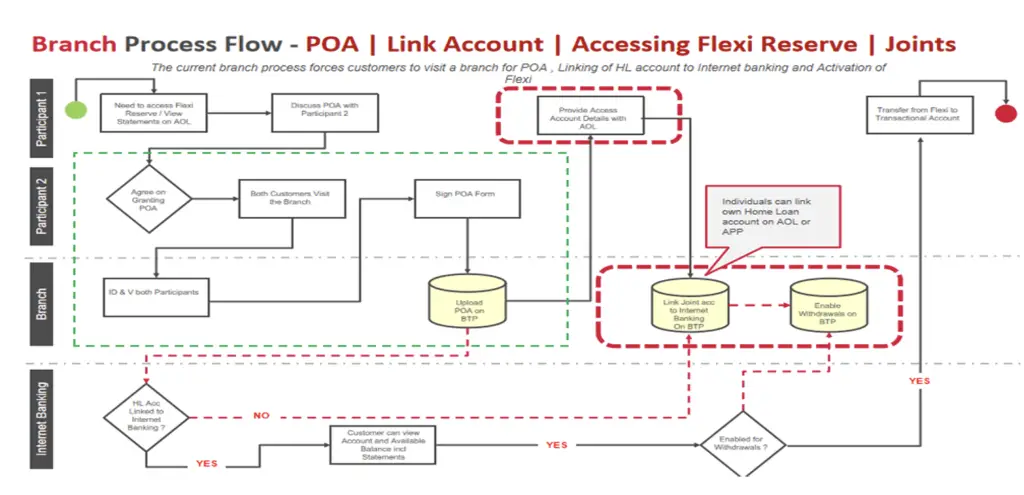
Stakeholder engagement
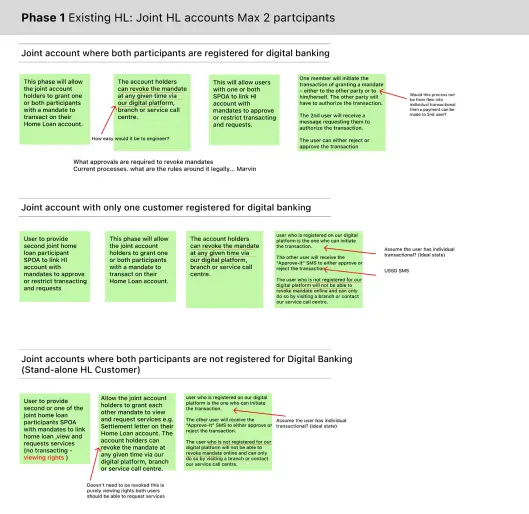

Process Overview
This was a complex and regulation-heavy initiative, so my design process needed to account for legal boundaries, tech feasibility, and usability.
Customer Journey Mapping
Stakeholder Alignment
I started by mapping the current end-to-end experience for both joint account holders and those seeking to activate PoA. This allowed stakeholders to visualise the customer pain points — including branch delays, paperwork confusion, and lack of visibility into PoA status — and where a digital solution could deliver the most value.
Created Customer Journey Maps to define pain points and align stakeholders on the digital vision.
Customer Journey Maps


User Flows & UX Strategy
User Flows
Once the journey maps were approved, I designed several user flow options to explore how the digital experience could accommodate different user scenarios: new PoA applications, revoking access, pending verifications, etc. This helped highlight decision points, backend requirements, and potential security considerations.
Designed multiple flows to optimise usability and reduce user friction.
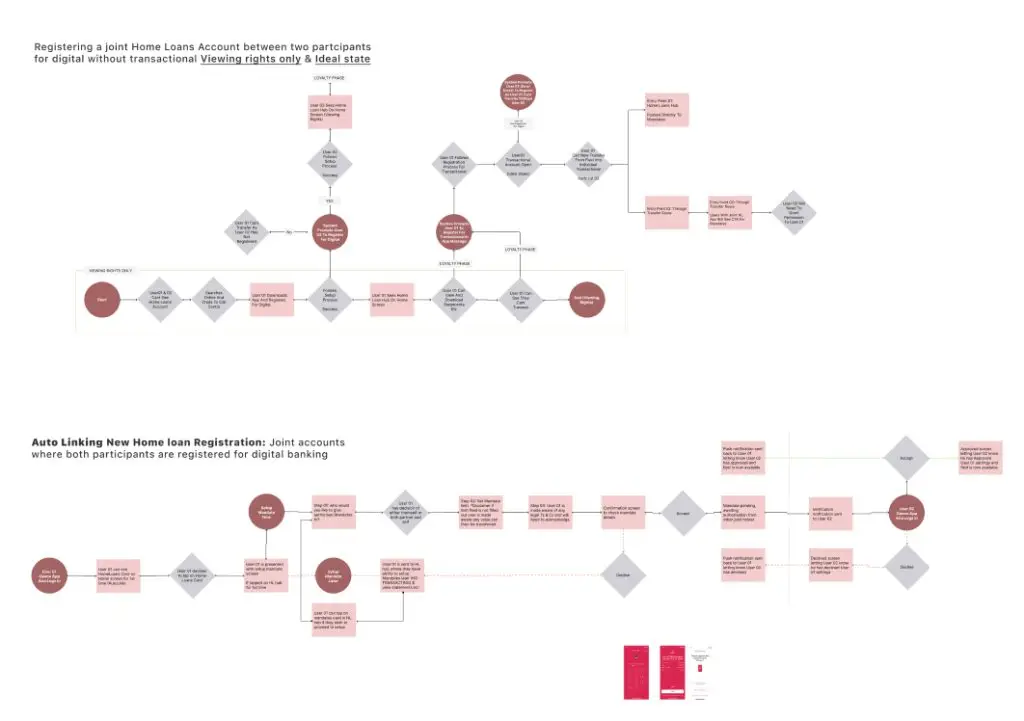
Technical Feasibility Assessment:
Technical Feasibility
I collaborated closely with the solution architect to conduct an impact assessment. This clarified what parts of the PoA process could realistically be digitised using the existing tech stack, and what would require backend upgrades or legal workarounds.
Collaborated with system architects to conduct impact assessments on backend readiness.
Wireframing & Iteration
Wireframing
Using the bank’s design system, I produced wireframes to show stakeholders how the flow would look and function in-app. These wireframes went through several iterations to refine screen logic, legal copy, error states, and success messaging.
Built initial wireframes using the design system and refined them over multiple iterations based on feedback.
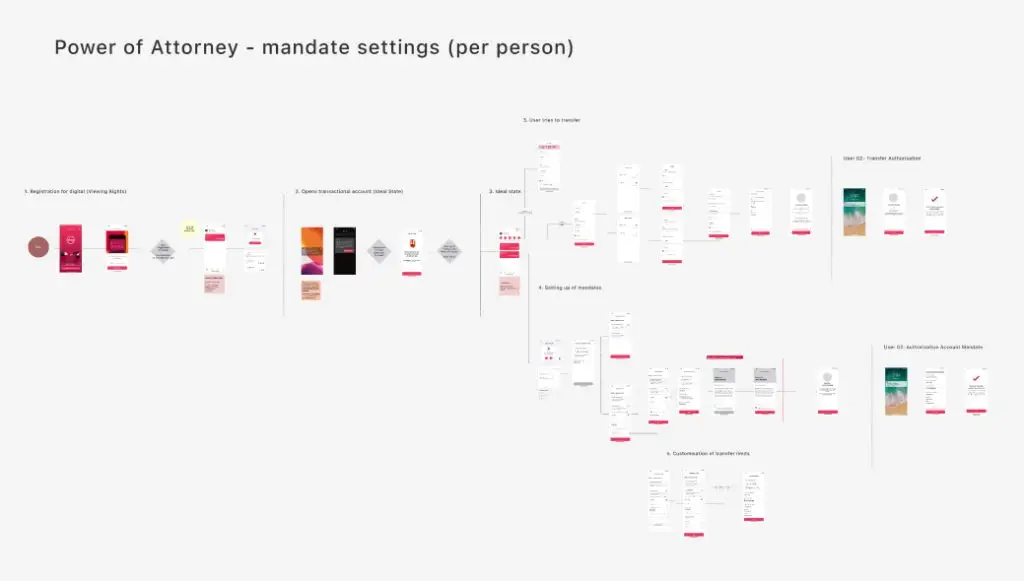
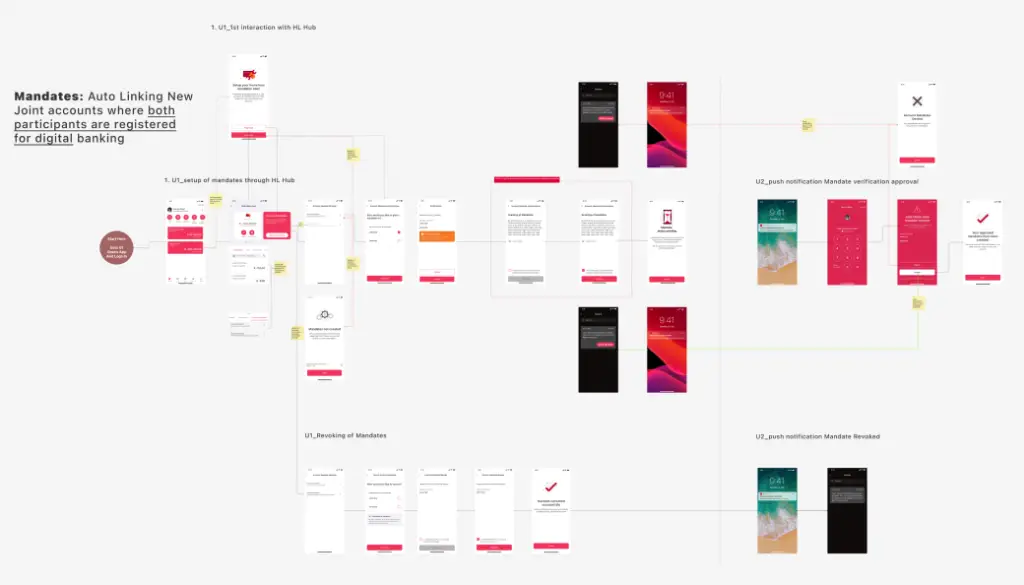
Cross-Functional Collaboration
Legal, compliance, and technical teams were heavily involved at each step. I facilitated working sessions to ensure that user needs were met without violating regulatory requirements, and that the interface could support any necessary consent mechanisms.
Outcome
Challenge & Outcome
Despite significant design progress and stakeholder alignment, the project was paused before it could enter user testing. A final tech review revealed that the current stack could not securely support the automation and real-time verification needed for PoA. The decision was made to halt the rollout until foundational backend changes were made.
Despite progressing toward a functional prototype, the project was halted due to infrastructure limitations discovered just before user testing. While the digital solution couldn’t launch, the UX groundwork and stakeholder alignment positioned the product for future readiness.
Key Takeaways
- Tech and legal feasibility should be validated early. Catching limitations in the final stages can waste effort and stall momentum.
- Design documentation has lasting value. Even though the project didn’t launch, the research, UX architecture, and design assets became reusable foundations for future iterations.
- Being the only designer means you also manage relationships. In regulatory-heavy spaces, trust and transparency across disciplines are key to moving forward.
Early technical assessments are critical to avoid late-stage blockers.
Strong documentation and research ensure value isn’t lost even when a project is paused.
